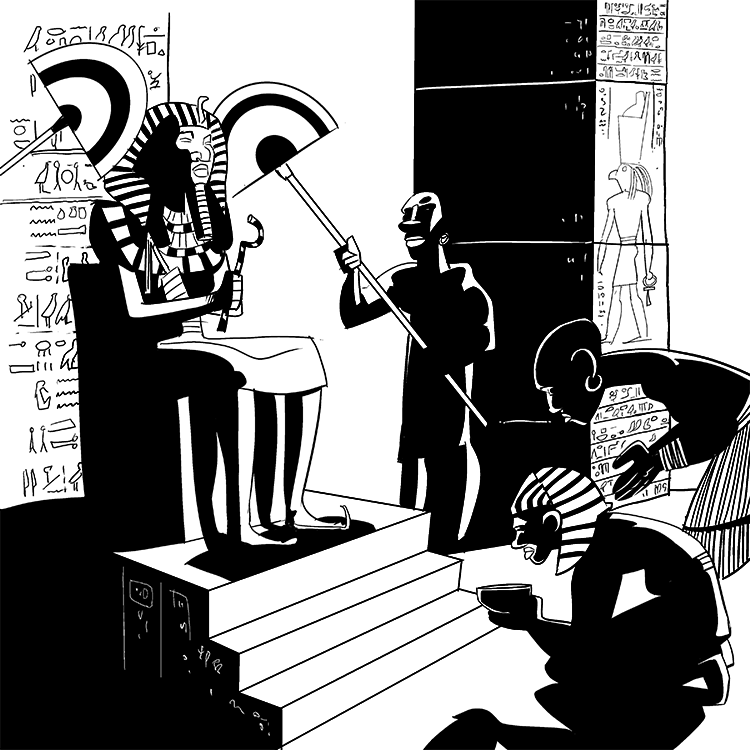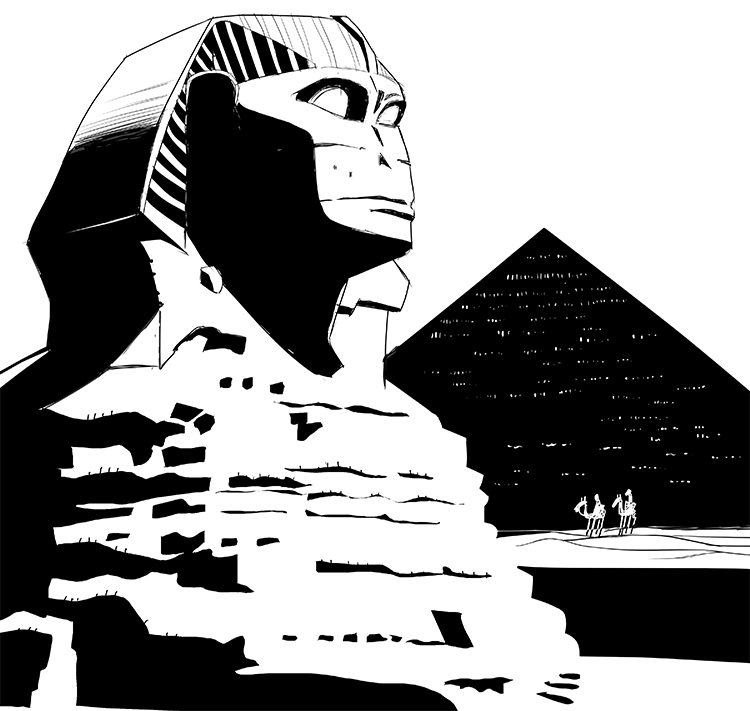In the early days of civilization in Egypt, there were many kings ruling many kingdoms. They interacted and traded with one another, but they were politically separate. There was no “Egypt.”
All this changed with the rise of the Old Kingdom, which was a 500-year-long period of prosperity and stability in Ancient Egypt. It was made possible by the unification of these cities under just one king.

Achieving Political Stability in Ancient Egypt
Despite its name, the Old Kingdom wasn’t ruled by just one king. Instead, it was controlled by a series of royal families, also known as dynasties. The strength of these dynasties helped unify Egypt and stabilize its politics.
The first step in establishing a dynasty in Ancient Egypt was to unify Upper and Lower Egypt. Upper Egypt refers to the southern parts of the Nile River, whereas Lower Egypt refers to the area surrounding its delta, which eventually empties into the Mediterranean Sea.
It’s believed that Upper and Lower Egypt came together under the Pharaoh Menes, who belonged to the First Dynasty. But written records from this time are not very good, so not much is known.
Fast forward about 500 years and a new dynasty emerges, the Third Dynasty. Led by the pharaoh Djoser, the Third Dynasty established its seat of power in Memphis and ruled over all of Egypt.
Memphis’ strategic position on the Nile helped its rulers control trade between Upper and Lower Egypt, making them rich and powerful while also making it easier to rule over both.
To control such a large territory, Djoser relied on the nomes system of government. Nomes were territories once ruled by independent kings. But under Djoser, these kings were independent no more. Instead, they were forced to “bend the knee” and had to rule on behalf of the king in Memphis. Those who tried to resist were removed from power, usually with a sword.
Religion and an ancient understanding of the world also helped Djoser and later kings get control of all of Egypt.
The ancient Egyptians relied heavily on the yearly flooding of the Nile River for successful farming. But Goldilocks conditions were required. Too much flooding ruined crops, but not enough kept them from growing in the first place. Ancient Egyptians believed the fate of the flood was decided solely by the gods.
Egyptian pharaohs claimed to be able to speak with the gods and carry out their will on Earth. This included speaking with the gods to ensure an ideal flood in the Nile Delta. Over time, and after repeated successful harvests, people began to believe the pharaoh was an actual god living in human flesh, and this helped him gain even more power.

The Age of the Pyramid Builders
After unifying Egypt and becoming the most powerful king in the land, Djoser did what all great ancient rulers do next: he set out to build things. But the construction frenzy started by Djoser resulted in structures never before seen in the ancient world, mainly the massive pyramids that have helped Egypt remain famous even today.
These large pyramids were made possible thanks to the breakthrough design of the step pyramid. Originally thought of by Imhotep, Djoser’s chief architect, step pyramids were built using flat platforms of different sizes. This meant they could be larger and also built from stone, which is more durable against the elements than the sand and mud that had been used in the past.
Once this new method was discovered, there was no stopping the Egyptian kings from embarking on massive construction projects. But the desire to build large monuments to wealth and power does not construct pyramids on its own. Instead, these projects required a tremendous coordination of resources, especially people. Tens of thousands of workers flocked from all over the ancient world to work on the pyramids of Egypt.
This makes the many pyramids built during the Old Kingdom much more than just large, impressive buildings. They became symbols of the wealth, power, and stability that existed thanks to the rise of the Old Kingdom.
The Fall of the Old Kingdom
Even in Ancient Egypt, all good things must come to an end. So, while Egypt prospered throughout the Old Kingdom and its borders grew to include southern Egypt and what is now Sudan and Ethiopia, the end was looming near.
Adding new territory helped increase the pharaoh’s power and prestige, but it also brought new, shiny goods to the people of Egypt. For example, luxury items, such as incense, gold, and silver, flowed into Egypt from its distant provinces.
Controlling these lands from Memphis required Egyptian pharaohs to rely even more on nomarchs. In the beginning, this worked just fine. But after some time, this system reduced the power of the central government.
Other factors led to the fall of the Old Kingdom. For example, Pepi II, one of the final pharaohs of the Old Kingdom, ruled for 94 years. Such a long life caused him to outlive his heirs, and this cast doubt about who should succeed him. A drought that prevented the normal flooding of the Nile Delta also brought hard times to Egypt around 2100 BC.
In the end, strong nomarchs, the lack of an undisputed king, and environmental stress combined to create ideal conditions for political disaster. Civil wars followed, and the unity that had existed under the Old Kingdom collapsed and would not be restored for another 150 years.
Written by Matthew Jones
Illustrated by Pablo Velarde Diaz-Pache
